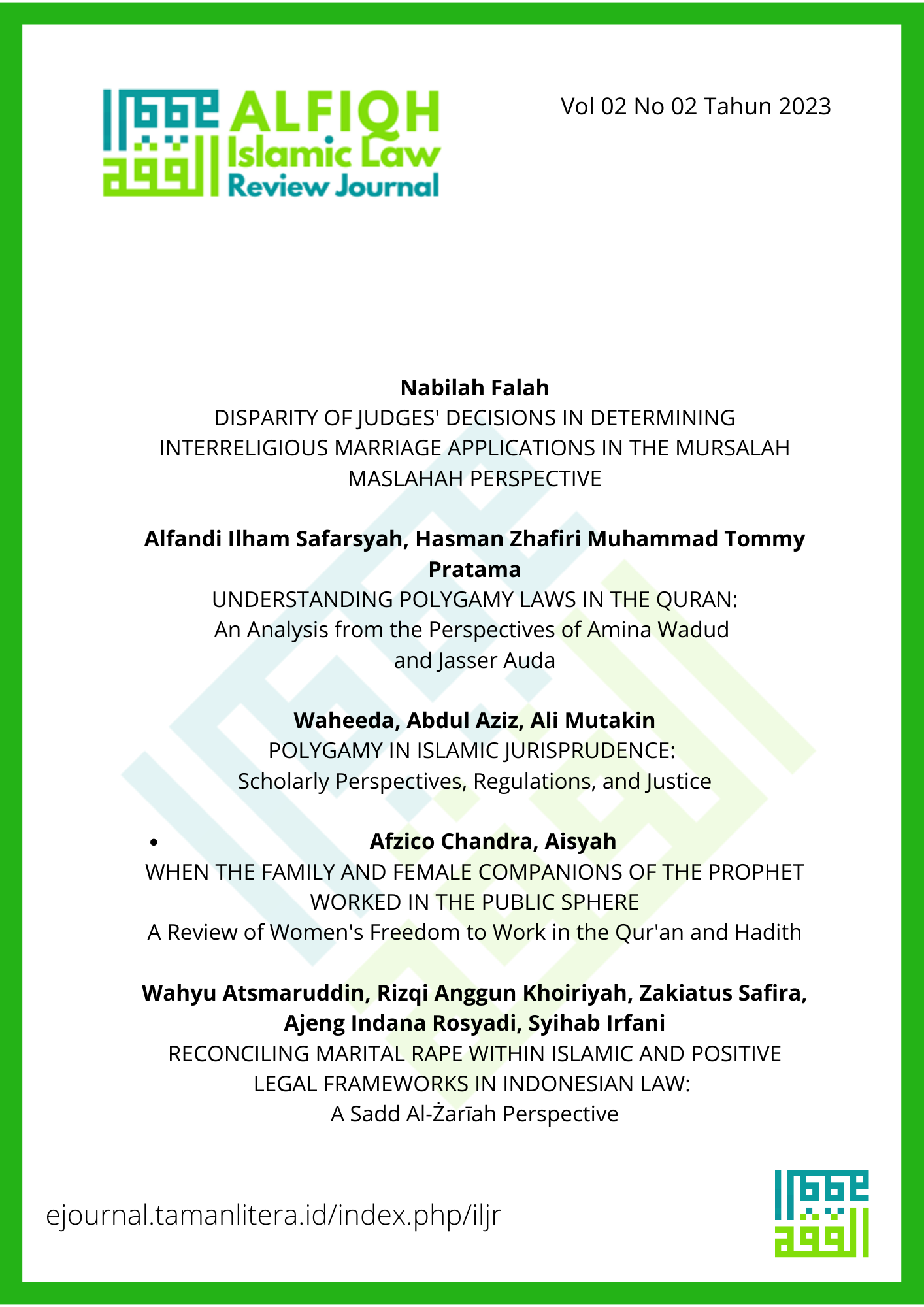UNDERSTANDING POLYGAMY LAWS IN THE QURAN
An Analysis from the Perspectives of Amina Wadud and Jasser Auda
Keywords:
polygamy, interpretation, Al-Qur'an, Amina Wadud, Jasser AudaAbstract
This paper aims to investigate the concept of polygamy as delineated in Quranic verse an-Nisa ayah 3, employing the perspectives of Amina Wadud and Jasser Auda. The research methodology employed is a literature review, utilizing a descriptive-analytical approach. The findings of this study reveal that the Quran does not provide support for several common rationales often used as foundations for engaging in polygamous marriages. Implicitly, the depiction of women as financial burdens is rendered obsolete. Such statements appear to be no longer pertinent; contemporary society has witnessed a substantial number of financially self-sufficient women. Furthermore, genuine productivity is assessed through various dimensions, with gender being just one of the factors contributing to productivity. Consequently, polygamy does not serve as a resolution to economic predicaments. In addition to its absence in the Quran, polygamy could be categorized as a non-Quranic practice, as it may potentially foster unrestrained male desires. Some argue that only upon acquiring four wives can the Quranic principles of self-restraint, propriety, and obedience be upheld. However, the principles of self-control and obedience are not limited solely to wives; these moral values equally pertain to husbands.
Downloads




